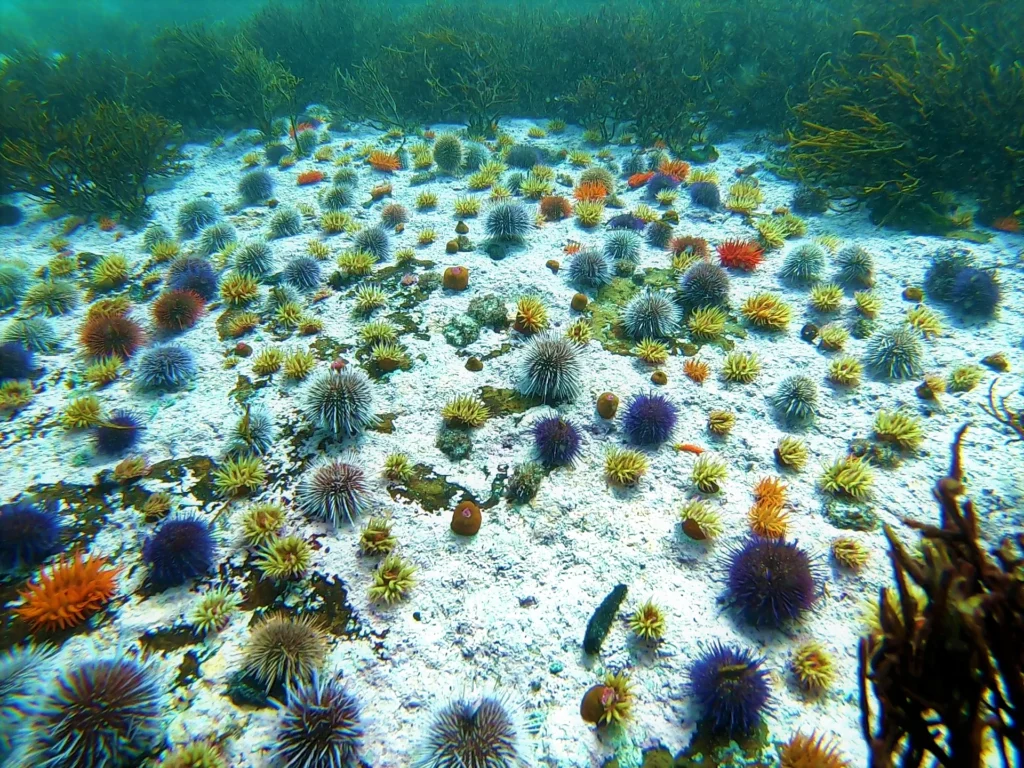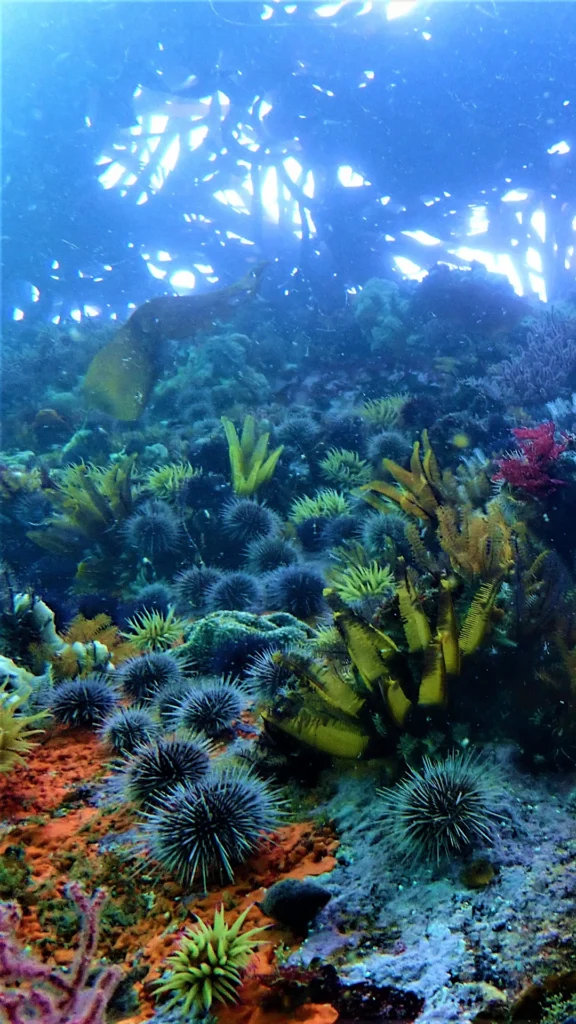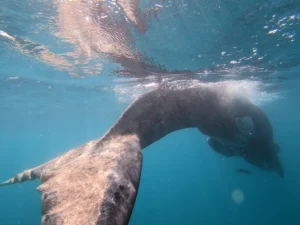Sea urchins are round, spiny echinoderms which roughly resemble a hedgehog rolled up into a ball. The word urchin is in fact derived from old French meaning hedgehog. There are about 950 types of sea urchin found around the world from the intertidal zone down to 5000 metres below. They also range from tropical waters all the way to the polar oceans. The Cape urchin is very frequently seen while kelp forest snorkeling in Cape Town especially in rocky areas along the False Bay side of the peninsula. They can be purple, green, red or pale in colour. Urchin shells can be found washed up on beaches around the Cape and are quite delicate and decorative. In Denmark and England urchin fossils were used in folk lore as protective amulets to ward off thunderbolts and witchcraft.

These spiny sea urchins are members of the same phylum as sea stars, sea cucumbers and brittle stars. Just like other echinoderms, they have five-fold symmetry called pentamerism. This is more obvious on their undersides where five double rows of tube feet can be seen. Their round hard shells are called tests and range between 3-10cm in diameter. The mouth of this animal is on its base (underside) and the anus is at the top. Spines are attached to its skeleton with ball-and-socket joints which allow the spines to swivel around. Sea urchins have no visible eyes and the tube feet work together with the spines for propulsion. Some species of sea urchin, like the Heart urchin, also use their adapted spines for burrowing. Around the spines, urchins have pedicellariae which are structures with jaws or barbs used to defend and groom the urchin. Urchins are distinctly male or female, but there are no visible external features which indicate the sex.

Algae (including kelp) form the primary diet of sea urchins, but some are also known to eat slow-moving animals like sea cucumbers, mussels, worms, sponges and brittle stars. In turn, fish, sea stars, crabs, rock lobsters and marine animals prey on urchins. Any disturbance to their predators that leave sea urchins unchecked can result in urchin barrens where macroalgae and other fauna are wiped out. This can have a cascading effect on other marine species. The reintroduction of sea otters in the kelp forests around British Columbia has been successful in improving the coastal ecosystem as they feed on sea urchins and keep their numbers in balance. Humans also harvest sea urchins for food, particularly in Japan where it is a delicacy. Urchins are cut open and the ‘roe’ or gonads of the sea urchin are eaten. Urchin seafood can be very expensive in places like Japan, but very few people harvest urchins here in Cape Town. Sea urchins defend themselves with their long, sharp spines which in a few tropical species can also be venomous. Keep in mind that creatures that unload toxins are ‘venomous’ and things we eat that are toxic are ‘poisonous’ so there are venomous sea urchins, but no poisonous sea urchins. Other creatures including abalone (juvenile perlemoen), crabs and shrimps shelter among urchin spines for safety. While we do not have venomous varieties of sea urchins around Cape Town, the local Cape urchin (Parechinus angulosus) poses a threat to local water users. Standing on an urchin, particularly when entering or exiting the water, can lead to a painful wound with spines penetrating the skin and breaking off. If these spines are not removed, further problems may occur.



